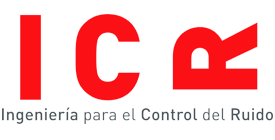Project 9: R&D Project in trains – META-X & META-W (2001-2006)
The French company Alstom Transport, relied on ICR's technological background, in 2001, to carry out an R&D project with the aim of designing a methodology and to develop an advanced tool for the vibro-acoustic characterization of a train.
This project, which lasted 5 years, was developed in two phases: META-X and META-W respectively.
The first phase of the study, the META-X project, was carried out between 2001 and 2004. The objective of this initial phase was to provide a measurement procedure capable of identifying and quantifying the vibro-acoustical contributions of the various subsystems, inside and outside of the train, as well as the different existing transmission paths. To achieve this, experimental measurements were carried out on different trains, in England and Germany. Different test procedures were also developed, to separate and quantify airborne noise from structural-borne noise.
The procedure developed was applied in two phases: the first phase with the vehicle stopped, to characterize the physical structure, using the method of transmission path analysis GTDT (Global Transfer, Direct Transfer); and the second phase with the vehicle under normal operational conditions, to quantify the different contributions of each part of the train to the total noise, based on the analysis of vibrations and noises measured in each subsystem. This characterization method is the well-known ATPA (Advanced Transfer Path Analysis) method, developed by ICR.
These procedures allowed ALSTOM Transport to optimize costs, providing a measurement process which permitted quick and efficient measurements.
To finalize the project, ICR created a custom software tool called VARSA for the organization and management of the data obtained during the measurements, which allowed the client to analyze and process data to obtain their results.
Once the first phase was completed, the META-W project began, which allowed the development of a new methodology for vibro-acoustic diagnosis and forecasting, which was expected to provide better results than the initial META-X method or any other method in use in that moment.
The META-W project was expected to achieve the same results as in the META-X project, but without the need to carry out the initial measurement with the vehicle stopped. This would have saved a minimum of 70% of the test time, which, valued in terms of days of work and immobilization time of a complete train, had a very significant economic importance for the customer.
Another objective of the META-W project was the adaptation of the VARSA software (implemented in the META-X project) to the new platform TestLab, substitute for CADA-X, thus implementing the new post-processing tool VARSALAB.
Thanks to the research carried out in the META-W project, a new transmission path analysis method was developed, which was also included in the new VARSALAB software.
The META-X and META-W projects are another example of ICR's differentiating technical capability and highly customer-centric approach, making possible the provision of high added-value solutions to their specific needs.







